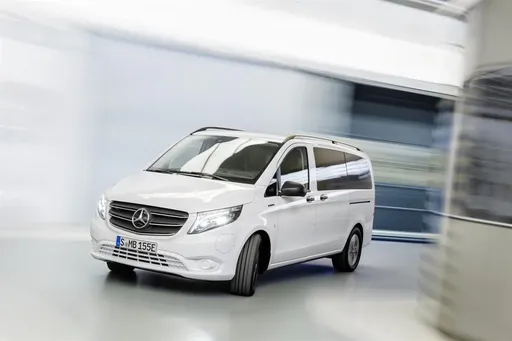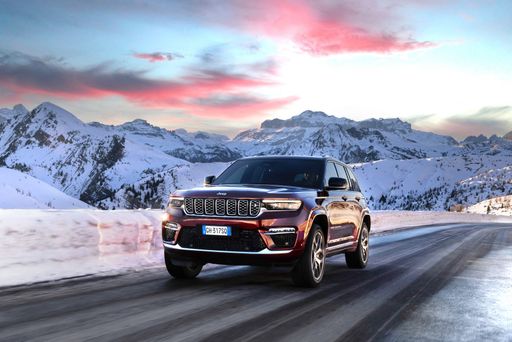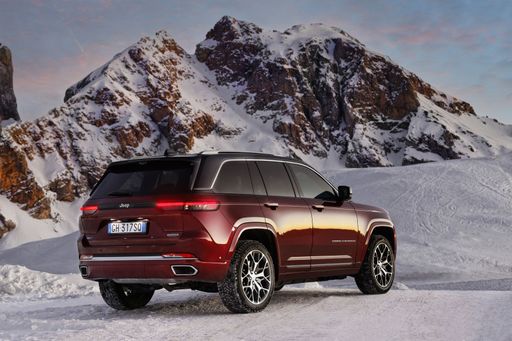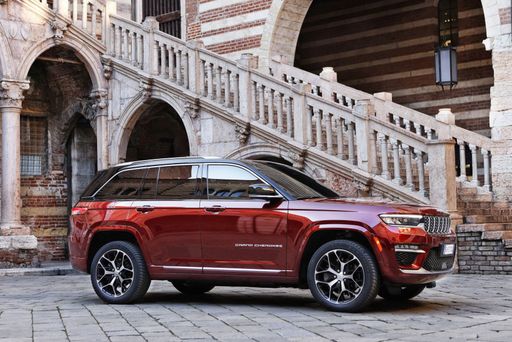Jeep Grand Cherokee vs Mercedes Vito Bus – Performance, range & efficiency compared
Compare performance, boot capacity, efficiency and price at a glance.
Find out which car is the better choice for you – Jeep Grand Cherokee or Mercedes Vito Bus?
Costs and Efficiency:
When it comes to price and running costs, the biggest differences usually appear. This is often where you see which car fits your budget better in the long run.
Mercedes Vito Bus has a significantly advantage in terms of price – it starts at 36300 £, while the Jeep Grand Cherokee costs 85600 £. That’s a price difference of around 49298 £.
Fuel consumption also shows a difference: Jeep Grand Cherokee manages with 2.90 L and is therefore clearly more efficient than the Mercedes Vito Bus with 6.70 L. The difference is about 3.80 L per 100 km.
As for range, the Mercedes Vito Bus performs convincingly better – achieving up to 370 km, about 325 km more than the Jeep Grand Cherokee.
Engine and Performance:
Power, torque and acceleration are the classic benchmarks for car enthusiasts – and here, some clear differences start to show.
When it comes to engine power, the Jeep Grand Cherokee has a evident edge – offering 380 HP compared to 237 HP. That’s roughly 143 HP more horsepower.
In terms of top speed, the Jeep Grand Cherokee performs distinct better – reaching 210 km/h, while the Mercedes Vito Bus tops out at 140 km/h. The difference is around 70 km/h.
There’s also a difference in torque: Jeep Grand Cherokee pulls clearly perceptible stronger with 637 Nm compared to 500 Nm. That’s about 137 Nm difference.
Space and Everyday Use:
Cabin size, boot volume and payload all play a role in everyday practicality. Here, comfort and flexibility make the difference.
Seats: Mercedes Vito Bus offers distinct more seating capacity – 8 vs 5.
In curb weight, Mercedes Vito Bus is noticeable lighter – 2023 kg compared to 2434 kg. The difference is around 411 kg.
In terms of boot space, the Mercedes Vito Bus offers convincingly more room – 1390 L compared to 520 L. That’s a difference of about 870 L.
In maximum load capacity, the Mercedes Vito Bus performs significantly better – up to 4990 L, which is about 2986 L more than the Jeep Grand Cherokee.
When it comes to payload, Mercedes Vito Bus convincingly takes the win – 1077 kg compared to 641 kg. That’s a difference of about 436 kg.
Who wins the race?
The Mercedes Vito Bus proves to be outperforms in nearly all aspects and therefore becomes our DriveDuel Champion!
Mercedes Vito Bus is the better all-rounder in this comparison.

Mercedes Vito Bus
Jeep Grand Cherokee
The Jeep Grand Cherokee impresses with its blend of rugged capability and refined elegance, making it a versatile choice for both off-road adventures and urban settings. Its spacious interior is complemented by high-quality materials and advanced technology, ensuring comfort and connectivity on every journey. With a strong reputation for performance, this SUV continues to uphold Jeep's legacy of delivering vehicles that are both powerful and reliable.
details @ media.stellantis.com
@ media.stellantis.com
 @ media.stellantis.com
@ media.stellantis.com
 @ media.stellantis.com
@ media.stellantis.com
 @ media.stellantis.com
@ media.stellantis.com
Mercedes Vito Bus
The Mercedes-Benz Vito Bus offers a versatile solution for those in need of spacious and comfortable group transportation. Its refined interior is designed to enhance passenger comfort, making it ideal for both business and leisure travel. With a focus on safety and efficiency, it provides a reliable driving experience that aligns with the high standards expected of the Mercedes-Benz brand.
details

|

|
|
|
|
Costs and Consumption |
|
|---|---|
|
Price
85600 £
|
Price
36300 - 55900 £
|
|
Consumption L/100km
2.90 L
|
Consumption L/100km
6.7 - 10 L
|
|
Consumption kWh/100km
-
|
Consumption kWh/100km
26.7 - 26.9 kWh
|
|
Electric Range
45 km
|
Electric Range
248 - 370 km
|
|
Battery Capacity
-
|
Battery Capacity
60 - 90 kWh
|
|
co2
65 g/km
|
co2
0 - 228 g/km
|
|
Fuel tank capacity
72 L
|
Fuel tank capacity
57 - 70 L
|
Dimensions and Body |
|
|---|---|
|
Body Type
SUV
|
Body Type
Bus
|
|
Seats
5
|
Seats
8
|
|
Doors
5
|
Doors
4
|
|
Curb weight
2434 kg
|
Curb weight
2023 - 2739 kg
|
|
Trunk capacity
520 L
|
Trunk capacity
580 - 1390 L
|
|
Length
4914 mm
|
Length
4895 - 5370 mm
|
|
Width
1968 mm
|
Width
1928 mm
|
|
Height
1858 mm
|
Height
1890 mm
|
|
Max trunk capacity
2004 L
|
Max trunk capacity
4190 - 4990 L
|
|
Payload
641 kg
|
Payload
726 - 1077 kg
|
Engine and Performance |
|
|---|---|
|
Engine Type
Plugin Hybrid
|
Engine Type
Diesel, Electric, Petrol
|
|
Transmission
Automatic
|
Transmission
Automatic
|
|
Transmission Detail
Automatic Gearbox
|
Transmission Detail
Automatic Gearbox, Reduction Gearbox
|
|
Drive Type
All-Wheel Drive
|
Drive Type
Rear-Wheel Drive, All-Wheel Drive, Front-Wheel Drive
|
|
Power HP
380 HP
|
Power HP
136 - 237 HP
|
|
Acceleration 0-100km/h
6.30 s
|
Acceleration 0-100km/h
-
|
|
Max Speed
210 km/h
|
Max Speed
140 km/h
|
|
Torque
637 Nm
|
Torque
330 - 500 Nm
|
|
Number of Cylinders
4
|
Number of Cylinders
4
|
|
Power kW
280 kW
|
Power kW
100 - 174 kW
|
|
Engine capacity
1995 cm3
|
Engine capacity
1950 - 1999 cm3
|
General |
|
|---|---|
|
Model Year
2024
|
Model Year
2024
|
|
CO2 Efficiency Class
B
|
CO2 Efficiency Class
G, A
|
|
Brand
Jeep
|
Brand
Mercedes-Benz
|
Is the Jeep Grand Cherokee offered with different drivetrains?
Available configurations include All-Wheel Drive.
The prices and data displayed are estimates based on German list prices and may vary by country. This information is not legally binding.
